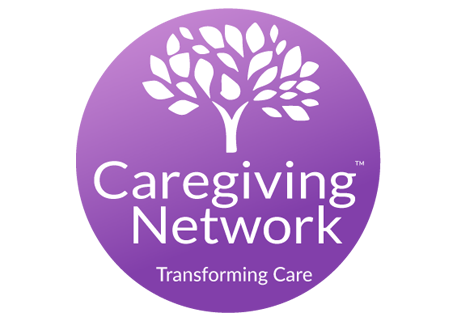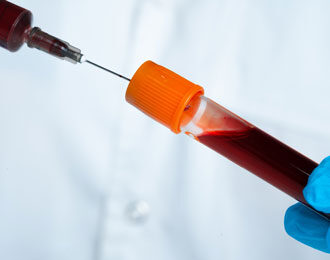Introductory Chapter: Advances in the Diagnosis and Management of Rare Diseases

IntechOpen – Updated for October 2021
Author: Zhan He Wu
Introduction
Rare diseases, also known as orphan diseases, are a group of disorders that affects a small percentage of the population which it commonly presented in early life, but it can also be seen in adulthood with chronic phase. These diseases are frequently progressive, disabling and life threatening. Approximately 30% of children suffering will die at 5 years of age.
Rare diseases not only have a severe impact on patients and families psychologically and financially but also create a huge burden to communities/societies and counties.
It is estimated that there are approximately 7000–8000 distinct rare diseases in existence. The majority of rare diseases are genetic based on their aetiology and pathology with huge variations of clinical phenotypes.
According to the estimation from the Global Genes Project, there are approximately 300 million people worldwide who have been affected by rare diseases, some types of rare solid cancers and haematological malignancies (liquid cancers), for example, myelodysplasia syndrome (MDS) and myeloproliferative neoplasms (MPN) including polycythemia vera, essential thrombocythemia, primary myelofibrosis, and chronic myeloid leukaemia.
Although there are some definitions relating to rare diseases based on the number of people living with a disease, including several factors such as the existence of adequate treatments or the severity of the disease, unfortunately, there is no single, widely accepted definition for rare diseases. Actually, the most accepted definition is no disease is rare when it affects someone you love.
Nowadays the treatment of infectious and nutritional disorders has been well established. In contrast, paediatric onset genetic disorders and cancer in children constitute a substantial load in paediatric clinics, and rare diseases are the major clinical load.
Advances in the diagnosis and management of rare diseases
In the past, diagnosis of rare diseases was very difficult due to the lack of diagnostic technologies. The detection rate for rare diseases was very low before the genomic era. Therefore, delayed or wrong diagnosis was not uncommon which resulted in stress, frustration and worry for patients and families.
Studies showed that only 36% of rare patients/individuals can be diagnosed earlier; about 25% of these got a different diagnosis, 15% sought a second opinion and 5% had unnecessary management and care.
In the last two decades, the study on rare diseases is the hallmark of genetic era in medicine from clinical symptomatic to pathological aetiology phase with the development of new technologies. With the advances of genomic technologies, the detection rate on genetic-based rare diseases dramatically increased.
The applications of next-generation sequencing technology have been bringing benefits to patients with rare diseases first. Excitingly, the concept and practice on rare diseases have been changing dramatically in the last decades.
In approximately 50% of the estimated 7000 rare diseases, responsible genes have been identified for the determination of their molecular aetiology, and it is predicted that the remaining 50% genes will be identified by 2020. This will be speeded up by the next-generation sequencing technology.
In order to guide the care for rare diseases and accelerate progress of rare disease research through international cooperation and collaboration, the International Rare Diseases Research Consortium (IRDiRC) was formed in 2011, and policies and guidelines were documented in 2013.
Much effort has been made in the last 10 years to increase knowledge of the epidemiology of rare diseases, including recognition of the specificity of rare diseases; develop information for patients; increase the health professionals and the general public concerning their diseases; train health professionals to better identify rare diseases; organise screening and access diagnostic tests; improve access to treatment and the quality of patient care; continue efforts in favour of orphan drugs; respond to the specific accompanying needs of people suffering from rare diseases; promote research on rare diseases; and develop national and international partnerships.
National Coordinated and Collaborative Approach, Data Collection and Use, Coordinated Care, Equitable Access to Services, Equitable Access to Diagnostics and Treatments, Nationally Coordinated Research both in malignant and non-malignant phenotypes have been established.
Huge steps have been made for the caring and therapies of rare diseases internationally. The last day of February each year is recognised as the Rare Disease Day. In 2015 and 2016, the Food and Drug Administration (FDA) approved 47% of the novel drugs for the therapies of rare diseases. It is aimed to develop 200 new therapies for rare diseases in 2020.
Advances in rare disease research
In the past, rare diseases were under-researched in many aspects and were also impeded due to the lack of population-based epidemiology, aetiology study of disease-related mechanisms, clinical treatment trials, diagnostic tools, research on health service and familial/communities and social researches.
In the recent years, the studies on the disease cause of genetic and environment and their interactions on rare diseases have become the key area in medical research. It is believed such studies hold the key for conquering human diseases. Studies on rare disease became the main stream from the branch stream in the paediatric research field.
High-throughput sequencing approaches (whole genome sequencing and whole exome sequencing) have revolutionised research and translated into accurate and specific diagnosis and effective treatment.
The discoveries on disease-causing genes, identification of inherited mutations and detection of genetic variations provided huge benefits to patients and families with rare diseases.
Knowledge and experience obtained from the studies on rare diseases not only increased our understanding of the correlations between phenotype and genotype, but also such studies have been enlightening the other medical areas, particularly in personalized medicine. Such research findings have been translating into the development in therapies.
Studies on rare diseases provided exciting opportunities in the identification of human disease-causing genes, understanding of common disease and the translation of genetic findings into clinical bedside.
Fanconi anaemia (FA) is the most classical, representative rare disease and the best example with the most successful achievements. FA is an inherited rare disease which is characterised with developmental abnormalities, progressive bone marrow failure and cancer predisposition commonly in acute myeloid leukaemia and first reported and named as a disease which was in 1927 by the Swiss paediatrician—Guido Fanconi.
FA has several synonyms such as Fanconi pancytopenia, inherited aplastic anaemia, inherited pancytopenia, constitutional aplastic anaemia, inherited bone marrow failure syndrome, premalignant disorder, chromosome breakup syndrome and DNA repair disorder. The incidence is 1 in 160,000 in the general population, but it is 1 in 20,000 in some ethnic groups.
So far, 23 responsible genes were identified, and interestingly, several of them are genes also found to be associated with other types of cancers, including breast cancer genes BRCA 1 and BRCA2.
It was the first successful example in cord blood stem cell transplantation in 1988. So the study on Fanconi anaemia is named as a paradigm for the understanding of cancer and aging.
Conclusion
The achievements in the last two decades in the diagnosis, management and research on rare diseases have been unprecedented. The advancing studies of rare diseases toward genetic causes and effective therapies have been progressing rapidly.
Policies and guidelines concerning rare diseases have been issued in different regions and countries. Life quality of patients with rare diseases has been improving with such advances internationally.
Increases in research funding support have been providing more and more coordination in different disciplines/areas of management to provide the forming of best practice.
Awareness of rare disease has been raising quality of life, and the ensuing impact on patients has been improving, although we are still facing challenges in medical and nonmedical issues.
Challenges from medical and nonmedical issues have been reducing with more knowledge and awareness of rare diseases in the community/society in the health-care strategies and established in vitro diagnostic and bioinformatics systems.
Further and deep studies on rare diseases across different levels and aspects, including the cell types, tissues and organs, are associated with rare diseases and the interactions between different cell types to explore mysteries.
Rare disease is named historically with the limitation of technologies in the symptomatic era under the condition from clinical data to distinguish from the common diseases, such as nutritional and infectious diseases which were relatively and predominantly higher.
However, it is believed that more rare diseases will be identified and reclassified in the future in the genomic era since we know that “rare disease” is probably not a proper terminology to be used currently to classify such a disease genetic base affecting such a large population worldwide.






